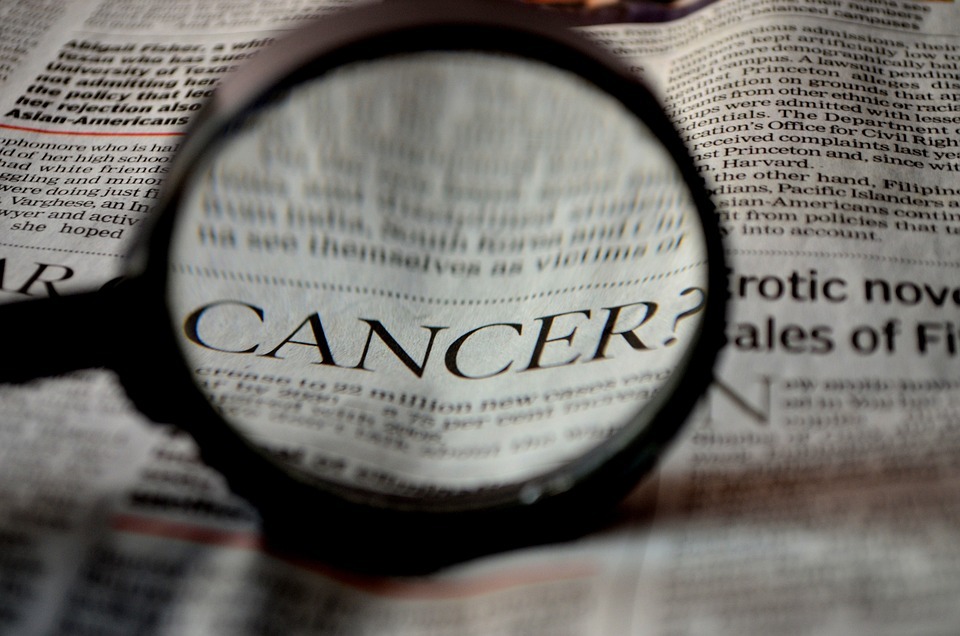Preventive Healthcare
Cancer: Types, Causes, Stages, Symptoms, Treatments and Tests
3192 Views
0

Cancer is the leading cause of death worldwide, taking the majority of lives. The rate of cancer worldwide and the number of deaths per year are rising despite advances in diagnosis and treatment.
Clinical diagnosis is used to detect cancer. A doctor can detect if a patient has cancer-based on their medical history and a physical examination. More testing is performed when a cancer diagnosis is suspected. When a cancer diagnosis is made, many courses of action may be taken.
In this article, we'll talk about the process of diagnosing and treating cancer, with an emphasis on screening tools.
What is Cancer?
Cancer is a group of diseases that are caused by uncontrolled cell growth in the body. The three most common types are breast, prostate, and colorectal cancer. Although cancer can occur in any part of the body, it most commonly occurs in the digestive tract or the skin.
The cancer spreads slowly in its early stages and may not show any symptoms at all. However, if left untreated, cancer can spread to other organs and be fatal.
Types of Cancer
Cancer is a broad term that refers to several diseases of the human body. The main types of cancer are:
Lung carcinoma is the most common type of cancer, and Non-small cell lung cancer (NSCLC) accounts for around 80% – 85% of overall lung cancer cases. NSCLC is classified into three primary subgroups: adenocarcinoma, squamous cell carcinoma, and giant cell carcinoma. It occurs when cells in the wall of the lungs become abnormal and start to grow uncontrollably.
Breast cancer: Although both men and women are at risk for developing breast cancer, females are more often diagnosed. It results from aberrant cell growth in the breast that causes the tissue to enlarge and bunch together. A staggering 1 in 8 females will be diagnosed with this cancer at some point.
Colorectal (bowel) carcinoma: Approximately one or two million fresh colorectal cancer (CRC) are identified annually, making it among the most frequent diseases globally. This malignancy begins in the lining of the colon or rectum.
Prostate Cancer: Prostate cancer is the second most frequent malignancy in men worldwide (behind lung cancer), with 1,276,106 cases reported and 358,989 fatalities. It arises from cells that line a portion of the whole prostate gland.
Cervical Cancer: Cervical cancer is caused by abnormal cell proliferation in the cervix. With an estimated 570,000 new cases identified yearly, cervical cancer is the most frequent malignancy in women globally. Cervical cancer is classified into three types: adenocarcinoma, squamous cell carcinoma, and histology not otherwise described.
Cancer Stages
Cancer is a disease that causes abnormal cells to multiply and spread throughout the body, potentially leading to death. Cancerous cells can form anywhere in the body, although they most commonly begin in one of the organs or tissues.
The five phases of cancer are as follows:
Cancer Prevention Stage - The key to cancer prevention is early diagnosis. If you discover you have cancer early, your treatment will be more likely to be effective.
In-Progress (Invasion) Stage - Cancer has begun to connect with adjacent tissues. This implies that it is no longer restricted to a single body portion.
Metastatic (International) Stage – Cancer has progressed beyond its initial location. It might have spread to other organs or tissues in the body.
Advanced (Dominant) Stage - Cancer has progressed, so that standard therapies such as surgery, radiation, and chemotherapy are no longer effective.
Dying (Regression/Recurrence) Stage - Even after treatment, some cancers can eventually return and cause death.
Common Cancer Tests
Cancer testing is an important part of disease management. There are various ways to test for cancer, including blood tests, urine tests, and physical exams. These tests can detect many different types of cancer, but some tumours require more precise testing.
Some frequent cancer tests include:
- A physical exam - A doctor will look at your body and check for any changes or unusual sensations. This is the most basic way to identify cancer.
- Blood tests - Sometimes, cancer cells may release substances that can be detected in a blood sample. These blood tests are very helpful in diagnosing early-stage cancers.
- X-rays - An x-ray is a picture showing how much tissue is affected by the cancerous growths. This is an essential test for people with symptoms suggesting their cancer might have spread (metastasized).
- Cancer staging test: Cancer staging test is a way to determine how far the tumour has spread. Staging can help guide treatment.
-A Biopsy: This test is a technique that takes a tissue sample from an area suspected of being malignant. This may be accomplished surgically or with a needle and thread.
-CT (computerised tomography) scan: A CT scan creates pictures of the body using X-rays. The most typically imaged areas are the chest, belly, pelvis, and spine.
-MRI (magnetic resonance imaging) scan: MRI scans create pictures of the brain and other regions of the body by using powerful magnetic fields and radio waves. They often rule out illnesses, including stroke, cerebral bleeding, and malignancies.
- PET scans: The same use radioactive chemicals known as positrons, which are delivered to patients through medical treatments such as chemotherapy or radiation therapy. Positron interactions with atoms in cells allow scientists to calculate how much energy has been released. This information could help doctors figure out where the tumour is in the body.
Prevention of Cancer
Cancer is a serious problem and, if left untreated, can lead to death. If you are at risk for cancer, it is important to get tested regularly.
There are many ways to prevent cancer, but some things you can do include:
• Avoid smoking- Smoking is the major cause of cancer.
• Eat a healthy diet- A healthy diet includes lots of fruits and vegetables, whole grains, and low-fat proteins.
• Exercise regularly- Exercise helps to reduce your risk of developing cancer.
• Get vaccinated against diseases like HPV (human papillomavirus)- HPV is linked to cervical cancer. Vaccination against HPV can help protect you from this disease.
Cancer Treatments
There are many different varieties of cancer, each with its unique symptoms that should always be considered when establishing a diagnosis. Lung, breast, colon, and lymphoma are some of the most frequent kinds of cancer.
Screening procedures, such as a physical exam or a blood test, may help in the early diagnosis of cancer. Cancer is more likely to be successfully treated if it is detected early. The type of cancer, as well as the individual's health history and preferences, influence treatment options.
Cancer treatments include surgery to remove the tumour, radiation therapy to injure or kill the tumour, chemotherapy, and/or a combination of therapies. The therapy aims to prevent cancer from spreading to other parts of the body or returning (metastasizing).
Some patients may additionally get hormone therapy or immunotherapy (antibody-based treatment) to attempt to prevent their cancer from recurring.
Conclusion
Thank you for reading this article on testing for cancer. We hope that it has provided you with the information you need to make an informed decision about whether or not to undergo testing. If you are unsure whether or not you should be tested, please see your doctor.
With the right diagnosis and treatment, many successfully manage their cancer without going through chemotherapy or radiation therapy.
 Home Visit
Home Visit Upload
Upload














1701259759.webp)









 WhatsApp
WhatsApp